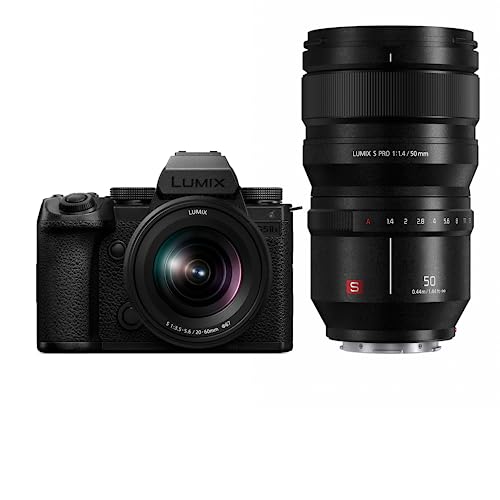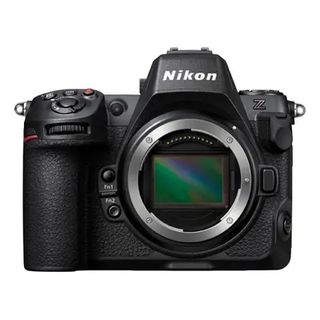Hybrid Cameras Explored: A Comprehensive Look Into the New Era of Photography
Introduction
The world of photography is always evolving, and one of the latest developments is the rise of hybrid cameras. Offering enhanced functionality and versatility, these devices are setting new standards in the industry. This comprehensive guide helps you explore what these cameras are, how they work, and how they compare to traditional models. We will also delve into their key features and advantages and introduce you to some of the most notable models in the market. So, whether you're an enthusiast or a pro, jump in, and let's explore the new era of hybrid cameras together.
What Is a Hybrid Camera?
Hybrid cameras - often known as mirrorless cameras - are an innovative take on the classic digital camera, offering a unique blend of features from both DSLR and compact point-and-shoot devices. Here are their key traits:
• A fusion of qualities: Hybrid cameras combine aspects of DSLRs and compact cameras, providing professional-quality images in a convenient, lightweight body.
• Absence of a mirror: Unlike traditional DSLRs, hybrid cameras operate without a mirror to reflect light, resulting in a smaller, lighter design.
• Image sensor usage: They use an image sensor to capture light directly and produce a photo, contributing to their high image quality alongside speed.
• Interchangeability: Like DSLRs, hybrid cameras offer the benefit of interchangeable lenses, giving you more freedom and versatility in your photography adventures.
This exciting advancement in the photography realm opens up new levels of potential and creativity for photographers across the board. Their emergence is setting technological waves across the industry.
How Do Hybrid Cameras Work?
Unlike traditional DSLR cameras, hybrid or mirrorless cameras introduce a fascinating structure and working mechanism. Let's delve into understanding how they function:
1. Elimination of the Mirror:
In DSLR cameras, a mirror inside the camera body reflects the light coming through the lens up into an optical viewfinder, allowing you to preview your shot. However, in a hybrid camera, this mirror is gone.
2. Light Path:
As a result of the absence of a mirror, when you press the shutter release button, the light from the scene around you goes straight through the lens to the image sensor. This is how the camera gathers the image data.
3. Image Preview:
The sensor then transmits a digital image to an electronic viewfinder (EVF) or the main LCD screen. This gives you a preview almost identical to what the final image will look like in terms of color, depth, and brightness.
4. Auto-focusing:
Hybrid cameras are praised for their autofocus speed. They leverage the imaging sensor for autofocus, which is usually faster and more accurate than separate autofocus sensors used in DSLR cameras. This makes hybrid cameras great for moving subjects, which can be more challenging for DSLRs to follow accurately.
5. Fast Shooting Speeds:
The absence of the mirror also means that hybrid cameras generally offer faster shooting speeds - an increasingly critical factor in today's high-speed photography.
6. Enhanced Video Capabilities:
Due to the superior autofocusing system, which covers a wide area of the shooting frame, hybrid cameras generally excel in video quality compared to DSLRs.
Thus, the working mechanism of hybrid cameras offers a blend of the best of both worlds – the high image quality of DSLRs and the compact size and simplicity of point-and-shoot cameras.
How Do Hybrid Cameras Compare to Traditional Cameras?
The introduction of hybrid cameras has sparked discussions among photography enthusiasts and professionals alike. This shift in trend encourages us to consider whether a hybrid camera or traditional DSLR would better suit our photo-capturing preferences. Let's delve into a detailed comparison containing distinct parameters to help you make an informed decision.
- Size and Weight Advantage: The first point that distinguishes a hybrid camera from its DSLR counterpart is its compact size and reduced weight, thanks to the absence of a mirror mechanism. This feature makes hybrid cameras an ideal choice for those who enjoy travel or street photography and require lightweight gear.
- Superior Video Capabilities: The power of hybrid cameras extends to videography as well. Unlike DSLRs that often limit the length of video clips, hybrids offer enhanced video capabilities with fewer restrictions, making them a top pick for videographers and vloggers.
- Shortcomings - Battery Life and Lens Choice: Despite their numerous advantages, hybrid cameras don't necessarily reign supreme in all aspects. Traditional DSLRs often outshine hybrids in terms of battery life. Moreover, the extensive collection of lenses available for DSLRs often surpasses the choices for hybrids.
- Viewfinder Preferences: Many DSLRs still use optical viewfinders, highly favored by professionals for their classic touch and exceptional clarity. On the other hand, hybrid cameras employ electronic viewfinders or LCDs, which provide a live preview of the image, including parameters such as exposure, depth of field, and white balance.
When choosing between a hybrid camera and a traditional DSLR, it boils down to individual preferences and specific requirements. One thing is certain: Both offer unique functionalities and the potential to significantly shape your photographic journey.
What Are the Key Features and Advantages of Hybrid Cameras?
When considering the purchase of a new camera, understanding its features and benefits is pivotal. Hybrid cameras have carved their niche within the market by providing a variety of impressive attributes and strengths. Here's what you should know:
Key Features:
1. Size and Weight: With their sleek, lightweight design, hybrid cameras are comfortable to hold and easy to maneuver. They are a fraction of the size and weight of traditional DSLRs making traveling with them a breeze.
2. Live View: Hybrid cameras provide a live view from the sensor on the LCD screen or electronic viewfinder. It is an accurate representation of what your photo will look like, ideal especially for novice photographers.
3. Advanced Video Capture: The incorporation of the latest technology allows hybrid cameras to offer superior video quality, including 4K resolution, automatic focus during video recording, and a host of additional video features that are often missing in most DSLRs.

4. High-Speed Shooting: Hybrid cameras are known for their fast shooting speeds, with some models offering high-speed capture of up to 20 frames per second.
5. Compatibility Hybrids have a broad range of compatible lenses, which offers users unlimited creative freedom in shaping the final image.
Next, let’s look at the key benefits and advantages these features translate into:
Advantages:
1. Portability: The compact size and lightweight nature of hybrid cameras make them convenient to carry around and perfect for on-the-go photographers.
2. Real-time Preview and Convenience: The fact that what one sees on the LCD or viewfinder is what the captured picture will look like, reduces the guesswork involved in setting exposure, white balance, and other parameters.
3. Cutting-Edge Video Technology: With superior video recording, hybrid cameras are a boon for photographers who frequently capture videos or vlogs.

4. Super-Fast Shooting: The high-speed capturing ability of hybrids enables seamless shooting of fast-action scenes, sports events, or wildlife.
5. Unmatched Compatibility: The wide compatibility of these cameras with different lenses allows photographers to capture varied compositions and perspectives.
While these points highlight the significant advantages of hybrid cameras, it remains essential to note that the choice of a camera should ultimately align with personal preference and specific needs. The ideal camera is subjective and dependent on one's unique photographic style and demands.
What Are Some Notable Hybrid Camera Models to Consider?
As you delve into the world of hybrid cameras, several models tend to stand out, each with unique features catering to a variety of needs and preferences.
- Sony Alpha a7 III: This model excels in myriad areas, including low-light photography and superior battery performance. The Sony Alpha a7 III also offers impressive dynamic range capabilities and a 24.2 MP BSI CMOS sensor, making it an all-rounder for those seeking versatility.
- Fujifilm X-T3: Fujifilm X-T3 is lauded for its unmatched color reproduction and impeccable 4K video capabilities. This camera includes a 26.1 MP APS-C X-Trans BSI CMOS 4 sensor and is known for delivering remarkable image quality combined with speed.
- Olympus OM-D E-M10 Mark IV: This model is an excellent choice for beginners, balancing ease-of-use with impressive image quality output. The flip-down LCD monitor is a bonus, making it an ideal camera for vlogging or selfies.
- Nikon Z7: With its high-resolution imaging and high-speed performance, the Nikon Z7 is perfectly designed for the pros. It features a 45.7 MP BSI CMOS sensor and up to 9 fps continuous shooting, offering a great combination of quality and speed.
- Canon’s EOS R5: Noteworthy for its unmatched 8K video capabilities and image stabilization, Canon's EOS R5 is a game-changer that caters to both professional and amateur videographers. This model also brings a robust 45 MP full-frame CMOS sensor into the mix.
The final choice rests upon your budget and individual needs in a camera. It's crucial to balance performance with price and to consider the kind of photography or videography you'll mainly venture into.
Conclusion
Hybrid cameras mark a significant step forward in photography, providing a compelling blend of convenience, versatility, and performance. They pack the functionality and quality of DSLRs into smaller, lightweight bodies and often come with upgraded video capabilities. Whether you're new to photography or a seasoned pro, exploring the world of hybrid cameras might just give your creativity a new edge. Ultimately, the best camera is the one that helps you capture your vision, your way.
Related FAQs about what is a hybrid camera
Why are hybrid cameras becoming more popular?
Hybrid cameras are increasingly popular due to their compact design, lightweight nature, and combination of professional-quality features from both DSLR and compact cameras. They also excel in video capabilities and fast shooting speeds, appealing to a wide range of photographers and videographers.
In what scenarios is a hybrid camera most beneficial?
Hybrid cameras are versatile, suitable for a variety of scenarios. They are especially beneficial for travel and street photography due to their portability. Their superior video and high-speed shooting abilities make them ideal for vlogs, and for capturing fast-action scenes, sports events, or wildlife.
How much does a typical hybrid camera cost?
The cost of a hybrid camera can vary greatly based on factors such as brand, features, and model. Entry-level models can start from a few hundred dollars, while high-end professional models may cost several thousand. It's recommended to assess one's needs and budget before purchasing.


